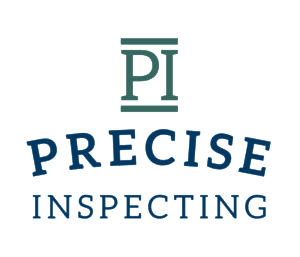What Are the Deal Breakers of a Home Inspection?
No home is perfect, and issues are bound to be found during a home inspection. The extent of the issues is now what makes all the difference. Most of the time, the issues are minor and fairly simple to resolve.
Sadly, though, some issues can be real deal-breakers and make buyers consider other options. That’s why, when selling a home, it’s important to carry out a pre-inspection process before listing your home.
Likewise, when buying a home, it’s in your best interest to have it inspected to know the home’s condition, advises SterlingPropertySolutions.com.
In this article, we’ll go through 6 deal-breakers that you’ll want to be on the lookout for.
Deal-breaker #1: Roof Problems
Roof leaks are a common problem home inspectors find in homes. The problem is usually caused by damaged shingles or flashing. While the problem may be easy to fix, deferring the maintenance for far too long can often lead to much bigger problems.
One such problem is the potential for mold growth. Mold grows in damp, moist, and warm conditions and spreads via spores. What’s worse, it spreads like wildfire. So, before you even notice it, chances are that it’ll have spread to your entire home.
And as you probably know, fixing a serious mold issue doesn’t come cheap.
Deal-Breaker #2: Wiring Problems

Whether a buyer or a seller, wiring problems aren’t issues you want to overlook. During a house inspection, an inspector will check the house for things like wiring for double-tapping, over-burden circuit breakers, lack of GFCI protection, ungrounded outlets, and general work for poor quality.
Home inspectors will also look for electrical components that are dated, such as aluminum and knob-and-tube wiring. Aluminum wiring, for instance, can lead to incessant turning off of light or recurring flickering without triggering the circuit breaker.
Replacing the wiring doesn’t come cheap. It can set you back by up to $15,000.
Deal-Breaker #3: Pest Infestations
A home infested with pests and bugs is a sure turn off to any potential buyer. Termites, for instance, are known to feed on the home’s structure leaving it unsteady and feeble under certain circumstances.
Deal-Breaker #4: Foundation Problems
The foundation of a home is arguably the most important structural component of any home. The foundation is what supports everything above it. So, when the foundation isn’t strong, it may mean that your entire home is compromised.
As a seller, if you suspect your home’s foundation is compromised, have it fixed as soon as you can. Because, as with other structural issues, the longer you wait, the worse the problem will become.
Some of the signs of a foundation problem include:
- Separation of cabinets and counters from the wall.
- The floors appear to be uneven or sagging.
- Gaps around exterior doors or double doors.
- Doors failing to function properly.
- The slab foundation moving in the upward direction.
- The foundation sinking or having settlement issues.
- Appearance of cracks on the wall, floor, or the foundation itself.
Just like other deal-breakers, such foundation problems can cost an arm and a leg to repair. According to HomeAdvisor.com, the average cost is around $4,405.
Deal Breaker #5: Plumbing Issues

Plumbing issues are also common problems home inspectors find when inspecting homes. Inspectors will check for leaks in and around your home. Many water leaks aren’t easily detectable and only get noticed when it’s already too late.
Besides checking for leaks, home inspectors will also check the pipes. In particular, they will check whether the house is equipped with polybutylene pipes. Utilized in the 70s and 80s, polybutylene pipes can leak all of a sudden and cause significant water damage.
Replacing or fixing water pipes can set you back by up to $10,000.
Deal Breaker #6: Mold
Finding out you have a mold problem in your home can be nightmarish. Black mold, besides having an impact on the structure of a home, can cause all manner of health issues to a person. It usually develops in areas that have been flooded or where there is significant exposure to water.
Mold is commonly found in areas such as floors, basement walls, and wet plasterboard. The following are some telltale signs that your home has a mold problem.
- Your attic insulation is lumpy.
- Your house smells musty.
- The floor feels squishy.
- Your baby is coughing too much at night.
- You’re coughing but don’t have a cold.
- The paint is bubbling on your walls.
- Your asthma is acting up.
- Your skin is tingling.
- The chimney smells weird.
Since most buyers will shy away from a home with a mold problem, have the problem fixed before listing the property.
If you are a buyer, it’s always best to have your potential ‘dream home’ inspected before committing further. This will help you get a feel for its condition. And if a seller, have the home pre-inspected first before listing. That way, you’ll not only know what to fix, but you’ll also be in a better position to price your property correctly.




